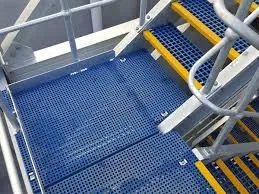
-
 Afrikaans
Afrikaans -
 Albanian
Albanian -
 Amharic
Amharic -
 Arabic
Arabic -
 Armenian
Armenian -
 Azerbaijani
Azerbaijani -
 Basque
Basque -
 Belarusian
Belarusian -
 Bengali
Bengali -
 Bosnian
Bosnian -
 Bulgarian
Bulgarian -
 Catalan
Catalan -
 Cebuano
Cebuano -
 China
China -
 China (Taiwan)
China (Taiwan) -
 Corsican
Corsican -
 Croatian
Croatian -
 Czech
Czech -
 Danish
Danish -
 Dutch
Dutch -
 English
English -
 Esperanto
Esperanto -
 Estonian
Estonian -
 Finnish
Finnish -
 French
French -
 Frisian
Frisian -
 Galician
Galician -
 Georgian
Georgian -
 German
German -
 Greek
Greek -
 Gujarati
Gujarati -
 Haitian Creole
Haitian Creole -
 hausa
hausa -
 hawaiian
hawaiian -
 Hebrew
Hebrew -
 Hindi
Hindi -
 Miao
Miao -
 Hungarian
Hungarian -
 Icelandic
Icelandic -
 igbo
igbo -
 Indonesian
Indonesian -
 irish
irish -
 Italian
Italian -
 Japanese
Japanese -
 Javanese
Javanese -
 Kannada
Kannada -
 kazakh
kazakh -
 Khmer
Khmer -
 Rwandese
Rwandese -
 Korean
Korean -
 Kurdish
Kurdish -
 Kyrgyz
Kyrgyz -
 Lao
Lao -
 Latin
Latin -
 Latvian
Latvian -
 Lithuanian
Lithuanian -
 Luxembourgish
Luxembourgish -
 Macedonian
Macedonian -
 Malgashi
Malgashi -
 Malay
Malay -
 Malayalam
Malayalam -
 Maltese
Maltese -
 Maori
Maori -
 Marathi
Marathi -
 Mongolian
Mongolian -
 Myanmar
Myanmar -
 Nepali
Nepali -
 Norwegian
Norwegian -
 Norwegian
Norwegian -
 Occitan
Occitan -
 Pashto
Pashto -
 Persian
Persian -
 Polish
Polish -
 Portuguese
Portuguese -
 Punjabi
Punjabi -
 Romanian
Romanian -
 Russian
Russian -
 Samoan
Samoan -
 Scottish Gaelic
Scottish Gaelic -
 Serbian
Serbian -
 Sesotho
Sesotho -
 Shona
Shona -
 Sindhi
Sindhi -
 Sinhala
Sinhala -
 Slovak
Slovak -
 Slovenian
Slovenian -
 Somali
Somali -
 Spanish
Spanish -
 Sundanese
Sundanese -
 Swahili
Swahili -
 Swedish
Swedish -
 Tagalog
Tagalog -
 Tajik
Tajik -
 Tamil
Tamil -
 Tatar
Tatar -
 Telugu
Telugu -
 Thai
Thai -
 Turkish
Turkish -
 Turkmen
Turkmen -
 Ukrainian
Ukrainian -
 Urdu
Urdu -
 Uighur
Uighur -
 Uzbek
Uzbek -
 Vietnamese
Vietnamese -
 Welsh
Welsh -
 Bantu
Bantu -
 Yiddish
Yiddish -
 Yoruba
Yoruba -
 Zulu
Zulu
frp step
Understanding FRP and the Key Steps in Its Application
Fiber-Reinforced Polymer (FRP) composites have gained immense popularity across various industries due to their remarkable strength-to-weight ratio, resistance to corrosion, and versatility. These materials, arising from the combination of a polymer matrix with fibers like glass, carbon, or aramid, have transformed fields such as construction, automotive, aerospace, and even sports equipment. In this article, we will explore the fundamental steps associated with the application of FRP, from its design and manufacturing to testing and implementation.
Step 1 Material Selection
The first and foremost step in utilizing FRP is the careful selection of materials. This involves choosing the right type of fiber reinforcement and resin matrix based on the specific requirements of the application. For example, carbon fibers are known for their high strength and stiffness, making them ideal for aerospace components, whereas glass fibers offer good durability at a lower cost and are commonly used in construction. Additionally, the resin type—whether epoxy, polyester, or vinyl ester—must be selected based on thermal and chemical resistance requirements.
Step 2 Design Considerations
Once the materials are chosen, the next vital step is the design of the FRP component. This requires a comprehensive understanding of the intended function, load-bearing requirements, and environmental factors. Design software often plays a crucial role here, allowing engineers to create detailed models and perform simulations to predict the behavior of the composite under various conditions. This step ensures that the final product will meet safety standards and perform optimally.
Step 3 Manufacturing Process
The manufacturing process of FRP can vary significantly based on the complexity of the component and the materials used. Common processes include hand lay-up, vacuum bagging, and filament winding. Each of these methods has its own advantages and is selected based on the size, shape, and production volume of the item being produced. The curing process is equally important, as it solidifies the polymer matrix and binds the fibers together, ensuring the integrity of the final product.
frp step

Step 4 Quality Control and Testing
Adherence to quality standards is crucial in the application of FRP. This often involves extensive testing to ensure the material's performance characteristics meet design specifications. Common tests include tensile strength, flexural strength, and impact resistance assessments. Non-destructive testing methods, such as ultrasonic or X-ray testing, may also be employed to detect any internal defects that could compromise performance. Rigorous quality control not only guarantees reliability but also enhances the overall safety of the application.
Step 5 Implementation and Installation
After successful testing, the implementation phase begins. This could involve the installation of FRP components in construction projects, the integration of automotive parts, or the assembly of aerospace structures. During installation, careful attention is given to alignment, bonding, and curing processes, ensuring that the components perform as intended in real-world conditions.
Step 6 Maintenance and Inspection
FRP structures, while highly durable, still require periodic maintenance and inspection to ensure their long-term performance. Regular checks for signs of wear, corrosion, and fatigue are critical for preventing failures. Innovations in monitoring technology, such as embedded sensors, can facilitate real-time tracking of structural health, allowing for proactive maintenance plans.
Conclusion
The utilization of Fiber-Reinforced Polymer (FRP) composites has revolutionized various industries, offering a combination of strength, light weight, and resistance to environmental stressors. The key steps in the application of FRP—material selection, design considerations, manufacturing, quality control, implementation, and maintenance—are crucial for ensuring effective performance and longevity. As technology advances, the techniques and processes related to FRP applications continue to evolve, paving the way for even broader uses of these remarkable materials in the future. With thoughtful application and innovation, FRP will remain at the forefront of composite materials, enhancing numerous engineering fields for years to come.









